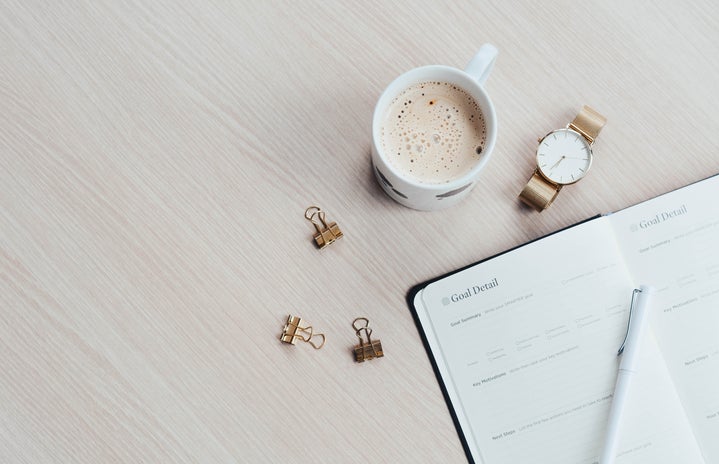Let me ask you a convicting question. Twenty-six days into the new year, how are your new year’s resolutions going? If you asked me this question any other year I would tell you that my efforts to go to the gym ended after day four. On that day my muscles were so sore that I collapsed from exhaustion after simply walking up a set of stairs. I would also tell you that my lofty goal of reading two books in a month resulted in endless scrolling on social media.
Breaking bad habits and creating new ones is a difficult feat. Especially since the New Year’s resolution culture consists of making grandiose plans to fix your entire life in one day instead of breaking your goals down into tiny compatible bits of progress. Unfortunately, social media can taunt you when you aren’t measuring up to ✨that girl✨ who wakes up at 7 a.m. for a run, journals her thoughts, and color codes her notes.
Upon reading Atomic Habits by James Clear I did not know what to expect. I thought it was just another run-of-the-mill self-help book that might provide me with a week’s worth of motivation after waking up from my post-holiday food coma. Little did I know, it would be much more.
The first thing that struck me when reading this book is that in order to determine the things you do you have to reframe who you are. In the book, he provides the example of a person who is trying to quit smoking. When asked if that person wants a cigarette, instead of saying “no, I am trying to quit smoking” it is more empowering to say, “no I don’t smoke.” Who you are, determines what you do. So by simply stating who you are, you are actively creating who you want to become.
His whole philosophy in regards to creating good habits surrounds making it obvious, making it attractive, making it easy, and making it satisfying. As humans, we are wired to use the least bit of energy possible on a given task. That is why you fall into the loop of binge-watching Netflix over going for a walk. In order to begin a new habit you have to schedule your intentions specifically. Put the time, location, activity, and date in your online calendar or agenda to keep yourself accountable.
In addition, priming your environment make future actions easier. For example, if I wanted to work out more I would schedule it into my calendar and set out my gym shoes and bag so that when I am back from class they would be right there. Pairing actions that you want to do with actions you have to do also helps. An example in the book was if you have to send emails but want to get a pedicure only get the pedicure while sending the emails.
The group of people you hang out with also greatly influences your habits, good or bad. If you surround yourself with people who are excessive drinkers you are more likely to also drink excessively because it is right there in front of you. Joining a community where your desired behavior is the norm is a helpful way to rewire your habits.
In order to break bad habits Clear talks about making the habits invisible, unattractive, difficult, and unsatisfying. You have to remove the cues in your environment that prime you to carry out a certain behavior, highlight the benefits of avoiding bad habits and increase the number of steps between you and your bad habits to make them more difficult.
On his website, Clear provides many different resources and worksheets to help you begin your journey with habit building. I highly recommend checking those out!
Over the past month, I have used this book to reshape the way I think and execute my daily life. I am more intentional with what I do so that I can work toward the person that I want to become. This does not mean I won’t make mistakes or slip up on bad habits. I am simply learning how to be lazy in a productive way. Habits should be small and easy changes yet produce remarkable results.


